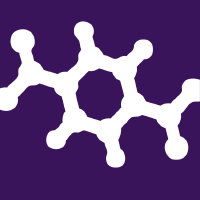Topic Menu
► Topic MenuTopic Editors


Cellulose and Cellulose Derivatives
Topic Information
Dear Colleagues,
Recently, the use of petroleum-based synthetic polymers has led to the serious environmental problems, including greenhouse gas emission and pollution. Thus, the development of eco-friendly materials is a quite important issue in material science in order to replace synthetic polymers. Various types of cellulose such as natural cellulose derived from different resources, chemically modified cellulose derivatives, in particular, nanocelluloses, have become promising eco-friendly materials due to their unique properties in the fields of electronic, energy storage system, biomedical science, sensors, environmental science, catalysis, and sustainable packaging. A number of laboratories have been pursuing the development of cellulose-based materials with high performance materials, for example, transparent polymers, super-strong polymers, nanocomposites in many important applications. Despite recent and significant advances in various types of celluloses, we still remain active in making substantial efforts to develop new cellulose materials and to understand their structure-property relationship. This Special Issue aims to explore scientific advances in all cellulose-related materials ranging from synthesis to processes and a variety of applications.
Prof. Dr. Jungmok You
Dr. Jeonghun Kim
Topic Editors
Keywords
- cellulose
- cellulose Derivatives
- holocellulose
- nanocellulose
- nanocomposites
Participating Journals
| Journal Name | Impact Factor | CiteScore | Launched Year | First Decision (median) | APC |
|---|---|---|---|---|---|

Polymers
|
5.0 | 6.6 | 2009 | 13.7 Days | CHF 2700 |

Applied Sciences
|
2.7 | 4.5 | 2011 | 16.9 Days | CHF 2400 |

Fibers
|
3.9 | 7.0 | 2013 | 24.1 Days | CHF 2000 |

Polysaccharides
|
- | - | 2020 | 17.6 Days | CHF 1000 |

Macromol
|
- | - | 2021 | 34.7 Days | CHF 1000 |

MDPI Topics is cooperating with Preprints.org and has built a direct connection between MDPI journals and Preprints.org. Authors are encouraged to enjoy the benefits by posting a preprint at Preprints.org prior to publication:
- Immediately share your ideas ahead of publication and establish your research priority;
- Protect your idea from being stolen with this time-stamped preprint article;
- Enhance the exposure and impact of your research;
- Receive feedback from your peers in advance;
- Have it indexed in Web of Science (Preprint Citation Index), Google Scholar, Crossref, SHARE, PrePubMed, Scilit and Europe PMC.

